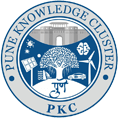Vision
To provide an early warning to public health agencies before they might be notified of positive cases for Dengue, Chikungunya, Influenza, H1N1 (Swine Flu) and RSV (Respiratory Syncytial Virus).
Description
Antimicrobial resistance (AMR) is currently a major problem which is severely compromising the effectiveness of antibiotic treatment in the clinical setting. Most pathogenic bacteria (including opportunistic ones) associated with diverse diseases exhibit AMR phenomenon, which can vary regionally depending on the local use and abuse of antibiotics. Decades of use of antibiotics in-mass in clinical treatment for various diseases has directly contributed to the emergence of spread of AMR. The use of antibiotics for the treatment of domesticated animals has also facilitated the emergence of AMR in pathogenic microbes with zoonotic potential. In addition, antibiotic waste (from industry and disposal of expired medicines) also contributes to AMR in environmental bacterial species. Also, the increased mobility of people around the world guarantees that microbes are easily transported and exchanged, resulting in easy spread of AMR globally.
Thus, AMR is a complex and interdisciplinary public health challenge at a global level.
While the evolution of resistance to antibiotics is a natural process, man-made processes are clearly responsible for its rapid development and spread. With continued increase in AMR, treating common infectious diseases is becoming harder and performing modern life-saving procedures is becoming riskier. Over the past few years numerous international organizations and national governments have launched initiatives to tackle the challenge of AMR and have identified surveillance as one of the most important areas of action. Regular monitoring of resistance elements in food, soil, water (including waste water) and hospitals is necessary for effective surveillance. The scope for zoonotic emergence of AMR (especially from large and organized animal farming) should be monitored as well.
Objectives
- Whole-genome sequencing (WGS)-based approach for detecting bacterial sub-groups and AMR genetic elements present in clinical samples from hospital inpatients.
- Developing PCR amplicon based NGS sequencing for routine surveillance of selected bacterial sub-groups and AMR genetic elements in clinical samples of inpatients and hospital environment.
- Studying the prevalence of bacterial pathogens and associated AMR genotypes from animal source. A focused study on raw milk samples.
- Developing surveillance data based early warning systems for predicting outbreaks in hospitals and communities (big data analytics).
Partners
- CSIR-NCL
- Ashoka University
For more information and interest to support, please write to [email protected].
